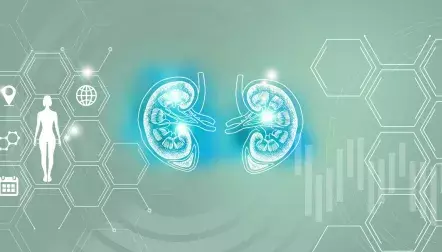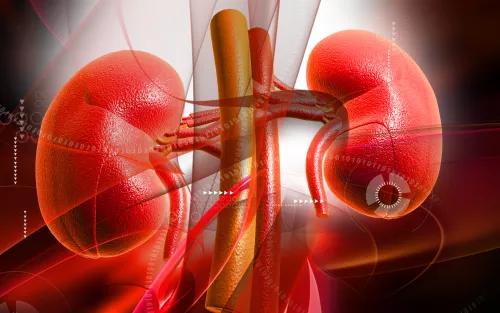
Kidney biopsy

- Medically reviewed by
- AKF's Medical Advisory Committee
- Last updated
- September 15, 2025
Jump to
Doctors can usually find kidney problems through blood and urine tests or through imaging such as an x-ray or CT scan. Sometimes, doctors need to do a kidney biopsy to correctly diagnose and treat kidney problems. A kidney biopsy is a procedure where doctors take a small piece of tissue from your kidneys to look at it under a microscope.
Why would I get a kidney biopsy?
A kidney biopsy can help your doctor figure out what is causing your kidney problem, how severe your kidney problem is and the best treatment.
Your doctor may suggest a kidney biopsy if tests show:
- Blood in your urine (hematuria)
- Protein in your urine (proteinuria)
- Kidney disease with no clear cause
- Nephrotic syndrome (a group of symptoms that when happen together can show that your kidneys are not working as well as they should)
- Concern for glomerular or inflammatory kidney disease
Your doctor may also suggest a kidney biopsy to find out if:
- The treatment for your kidney problem is working
- There is damage to your kidneys that cannot be reversed
- A transplanted kidney is not working well
- You have a kidney tumor
- If your kidney problem is caused by a rare kidney disease
If you have any questions about why you need a kidney biopsy and how it could help treat your kidney problem, talk to your doctor.
What are the different types of kidney biopsies?

There are two types of kidney biopsies. Your doctor will decide which type is best for you.
Percutaneous Biopsy
The most common type of biopsy is a percutaneous (through the skin) biopsy. Your doctor will make a small cut in your belly (for transplant patients) or back and use a thin needle to take out a tiny sample of your kidney tissue. You will be awake during the procedure, but your doctor will give you medicine to help you relax and will numb your skin so you do not feel pain. Doctors typically do not use sedation for a biopsy except in some cases with pediatric patients.
Laparoscopic Biopsy
If you have bleeding problems, a blood clot disorder or only one kidney, your doctor may do a laparoscopic biopsy. During a laparoscopic biopsy, your doctor will make a small cut and insert a thin, lighted tube with a camera at the end to look at your kidneys. The camera allows your doctor to look for bleeding during the procedure and stop the procedure if needed. Your doctor can also take out small samples of your kidney tissue through the tube. A laparoscopic biopsy requires anesthesia, a medicine to put you to sleep during surgery so you will not feel anything during the procedure. This is usually done in transplant patients early after the transplant and is not a routine procedure.
What are the risks of a kidney biopsy?
As with any procedure, there are some risks of a kidney biopsy. These risks include:
- Bruising and pain
- Bleeding at the biopsy site or inside your body
- Damage to nearby organs
- Infection near the biopsy site
- These complications usually occur in 1% or less of biopsies
There may be other risks depending on your overall health. Be sure to ask your doctor if you have any questions about risks before the procedure.
How can I prepare for a kidney biopsy?
If your doctor thinks you need a kidney biopsy, they will schedule an appointment and talk with you about the procedure. They may have you stop certain medicines that may cause bleeding during or after the procedure. They may also tell you not to eat or drink for eight hours before the procedure.
What can I expect after a kidney biopsy?
Here is where you can expect after your biopsy:
- You may feel some soreness at the biopsy site.
- Usually, you can go home a few hours after the procedure, but sometimes patients stay at the hospital overnight so doctors can watch for signs of bleeding inside your body, or other health problems.
- You will be able to eat and drink after the procedure.
- Your doctor will explain how and when you can do your usual activities.
- Your doctor will also tell you what to watch for after going home, such as:
- Blood in your urine (pee) for more than 24 hours after your biopsy
- Not being able to urinate (pee)
- High fever
- Pain near the cut from your biopsy that gets worse
- Feeling dizzy
If you have had a biopsy recently and are having any of these problems, contact your doctor right away.
When will I get my biopsy results?
After the biopsy, the kidney tissue sample is sent to a pathologist who is specially trained to look at samples and help doctors diagnose health problems. They will look at your kidney tissue under a microscope to find out more about your kidney problem. It usually takes about a week to get the full results from your doctor.

